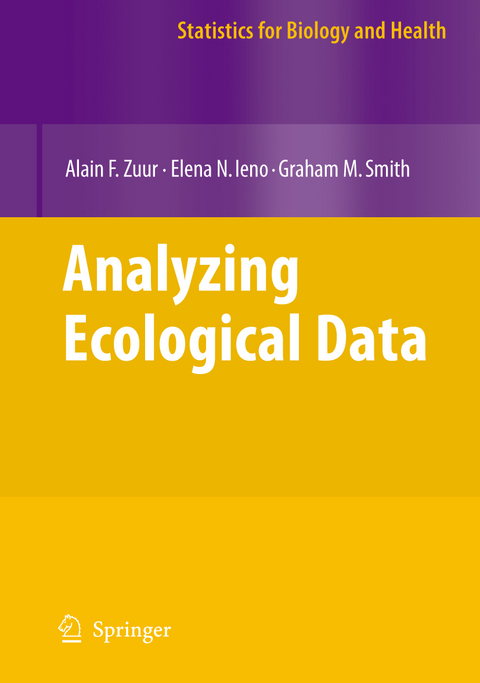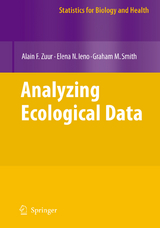Analyzing Ecological Data
Springer-Verlag New York Inc.
978-0-387-45967-7 (ISBN)
Grad students, researchers
Data management and software.- Advice for teachers.- Exploration.- Linear regression.- Generalised linear modelling.- Additive and generalised additive modelling.- to mixed modelling.- Univariate tree models.- Measures of association.- Ordination — First encounter.- Principal component analysis and redundancy analysis.- Correspondence analysis and canonical correspondence analysis.- to discriminant analysis.- Principal coordinate analysis and non-metric multidimensional scaling.- Time series analysis — Introduction.- Common trends and sudden changes.- Analysis and modelling of lattice data.- Spatially continuous data analysis and modelling.- Univariate methods to analyse abundance of decapod larvae.- Analysing presence and absence data for flatfish distribution in the Tagus estuary, Portugal.- Crop pollination by honeybees in Argentina using additive mixed modelling.- Investigating the effects of rice farming on aquatic birds with mixed modelling.- Classification trees and radar detection of birds for North Sea wind farms.- Fish stock identification through neural network analysis of parasite fauna.- Monitoring for change: Using generalised least squares, non-metric multidimensional scaling, and the Mantel test on western Montana grasslands.- Univariate and multivariate analysis applied on a Dutch sandy beach community.- Multivariate analyses of South-American zoobenthic species — spoilt for choice.- Principal component analysis applied to harbour porpoise fatty acid data.- Multivariate analyses of morphometric turtle data — size and shape.- Redundancy analysis and additive modelling applied on savanna tree data.- Canonical correspondence analysis of lowland pasture vegetation in the humid tropics of Mexico.- Estimating common trends in Portuguese fisherieslandings.- Common trends in demersal communities on the Newfoundland-Labrador Shelf.- Sea level change and salt marshes in the Wadden Sea: A time series analysis.- Time series analysis of Hawaiian waterbirds.- Spatial modelling of forest community features in the Volzhsko-Kamsky reserve.
| Erscheint lt. Verlag | 3.5.2007 |
|---|---|
| Reihe/Serie | Statistics for Biology and Health |
| Zusatzinfo | XXVI, 672 p. |
| Verlagsort | New York, NY |
| Sprache | englisch |
| Maße | 155 x 235 mm |
| Themenwelt | Mathematik / Informatik ► Mathematik |
| Naturwissenschaften ► Biologie ► Ökologie / Naturschutz | |
| ISBN-10 | 0-387-45967-7 / 0387459677 |
| ISBN-13 | 978-0-387-45967-7 / 9780387459677 |
| Zustand | Neuware |
| Haben Sie eine Frage zum Produkt? |
aus dem Bereich




